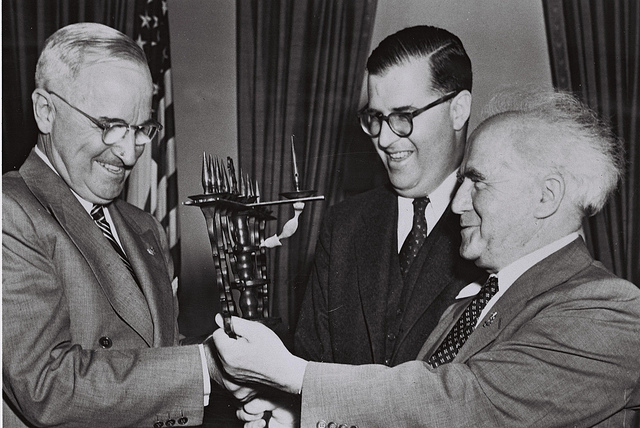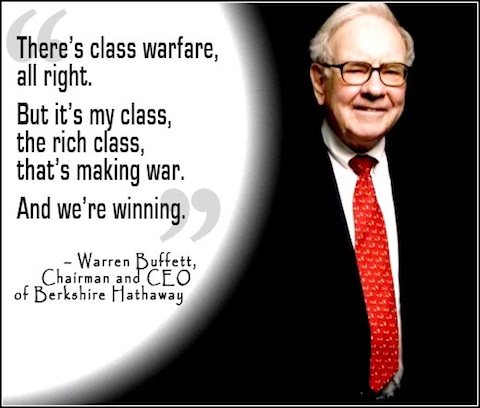The killing of Michael Brown brought a great many things into focus — so many that it can be hard to keep track of them all. One important point was the dramatic contrast between elite treatment of police — routinely deferred to, even when they kill — and the routine scapegoating of teachers, who are demonized for all the ills that America’s elites have given up on. Of course, this has nothing to do with police officers and teachers themselves. It has everything to do with the roles they play — or can play — in either strengthening and defending the status quo, or in empowering possibilities of change.
Further revealing the pattern of police abuse surrounding Wilson’s killing of Michael Brown, it was later reported that Ferguson police have been involved in four federal lawsuits and more than a half-dozen investigations over the past decade, for a reported 13 percent rate of misconduct. What’s more, in a
New York Times Op-Ed, University of California Irvine Law School dean Erwin Chemerinsky warned that even an announced Justice Department investigation would have limited impact. “ [I]f the conclusion is that the officer, Darren Wilson, acted improperly, the ability to hold him or Ferguson, Mo., accountable will be severely restricted by none other than the United States Supreme Court,” Chemerinsky wrote. “In recent years, the court has made it very difficult, and often impossible, to hold police officers and the governments that employ them accountable for civil rights violations.” The title of Chemerinsky’s Op-Ed? “How the Supreme Court Protects Bad Cops.”
Chemerinsky focused on a set of recent decisions — 2011 and later. But even before those decisions took effect, police accountability was almost nonexistent, according to an New York University law review article, “
Police Indemnification,” by UCLA law professor Joanna C. Schwartz. When plaintiffs do recover money for police misconduct, it’s taxpayers, not the police, who foot the bill. In her conclusion, Schwartz wrote:
Law enforcement officers employed by the forty-four largest jurisdictions in my study were personally responsible for just .02% of the over $730 million paid to plaintiffs in police misconduct suits between 2006 and 2011. Law enforcement officers employed by the thirty-seven small and mid-sized departments in my study paid nothing towards settlements and judgments entered against them during this period. Officers did not contribute to settlements and judgments even when they were disciplined, terminated, or criminally prosecuted for their misconduct. [Emphasis added.]
This nationwide coddling of police misconduct — one might almost call it “encouragement” — stands in stark contrast to the above-indicated nonstop vilification of “bad teachers,” who never seem to kill anyone, and yet have been the subject of a sustained multi-decade bipartisan attack.
Brown himself was an educational success story, despite the odds, a high school graduate just days away from his first day in college, even though Ferguson’s school system is arguably as troubled as its police department. As
Rebecca Klein noted at Huffington Post, Brown’s high school, Normandy High, “is emblematic of a system that’s failing low-income kids.” It combines low graduation rates, high rates of violence, and soaring suspension rates; the state has labeled Normandy a “failed district” based on standardized test scores, and it’s located in a state where poor schools tend to get the least funding —
one of two worst states (along with North Carolina) in terms of low scores on all four equity measures.
Yet, graduate he did. Michael Brown’s success seemed due to his efforts, his family’s support, and the attitudes of those who taught him. At least that’s the strong impression you get from Brown’s kindergarten teacher, Deidre Sealey, who posted a moving commentary about him on Facebook, which has been
tweeted as well. “Michael was one of the kindest kids that I have taught,” she wrote. “Michael was quiet, yet funny. He had an infectious smile. Some things I remember most was how Michael’s grandfather or dad picked him up from school every day. His mom, dad, and extended family were fiercely protective of Michael and at that time, his only sister, Deja. They were active in every aspect of his education, conferences, school performance, et al…. Each of my colleagues, who had the opportunity to teach Michael, have echoed my sentiments.” The picture Sealey paints is not just of a young man who did everything right, educationally, but of a whole extended family that did — and, implicitly, educators who valued their years of dedication.
So where is the Deidre Sealey of the Ferguson police force? If there were one, odds are very good that Michael Brown would still be alive. Yet, the officer who killed Brown had a spotless record, according to the department, while the school district was overrun with “bad teachers,” according to the logic of the system that labeled it as “failed.”
There is something very wrong with the diagnostic systems that send us such signals, and it’s not that hard to decode what they actually mean: The police are supposed to maintain social order, and they are judged accordingly by those who call the shots; they can do no wrong. Teachers, on the other hand, are an unreliable lot. They can fill kids’ heads up with all sorts of crazy ideas. Liberty, equality, democracy. Maybe even a hint of what a real civil rights movement looks like. So they’ve got to be policed, themselves!
This isn’t to imply that Ferguson’s schools are actually much better than they seem—they’re not. But it’s not the fault of “bad teachers.” It’s the fault of multiple factors, most of the largest ones traceable back to race and class. A
recently published working paper, based on nationwide data, found that a 20 percent increase in school funding, due to changes that began in the 1970s, produced dramatic results in the academic success of low-income students:
[A] 20 percent increase in per-pupil spending each year for all 12 years of public school for children from poor families leads to about 0.9 more completed years of education, 25 percent higher earnings, and a 20 percentage-point reduction in the annual incidence of adult poverty; we find no effects for children from non-poor families. The magnitudes of these effects are sufficiently large to eliminate between two-thirds and all of the gaps in these adult outcomes between those raised in poor families and those raised in non-poor families.
The problem, quite simply, is that those school funding changes have not gone far enough, and have even been reversed in some cases. In Missouri, specifically, as noted above, the state actually increases disparities between affluent and poor districts. Add to that the nationwide reversal of desegregation gains, as
documented by the Civil Rights Project at UCLA, and you’ve explained the vast majority of what ails Ferguson’s school system.
As Berliner notes, these figures hold both nationally and internationally. Similarly, the American Statistical Association, in a
cautionary statement about the use of “Value Added Measurement” to evaluate teachers, added: “Most VAM studies find that teachers account for about 1% to 14% of the variability in test scores, and that the majority of opportunities for quality improvement are found in the system-level conditions.
Ranking teachers by their VAM scores can have unintended consequences that reduce quality.” [Emphasis added.]
The strongest contrast with how well-protected even lethally bad policing is compared to teachers came three weeks after Brown was killed, when the
final review was issued in Vergara vs. California, striking down California’s teacher tenure laws. The ruling — which
has already been appealed — actually strikes down five California education laws, including teacher tenure, which for K-12 teachers merely means due process protection against arbitrary firing. Bad teachers deprived them of their civil rights, the plaintiffs argued, and the judge agreed — even though there was no solid evidence that any of them actually had a “bad teacher” as
Diane Ravitch explained in June. One plaintiff said she had a bad teacher, and pointed to Christine McLaughlin, a Pasadena “
teacher of the year.” Other plaintiffs were in charter schools or a pilot program where the tenure protections for teachers didn’t even apply!
With “standards” like that for who qualifies as a “bad teacher,” it’s impossible to say if Michael Brown ever had one. We only know one thing for sure: He wasn’t killed by one.
What should be obvious from all the above is that cops are unfairly protected when they do something grievously wrong, and the teachers are unfairly blamed when they simply show up for work in a difficult educational environment. But my purpose here is not a simple role switch, arguing that individual police should be presumed guilty and individual teachers presumed innocent. Instead, I’m saying three things:
1) The most important factors for both law enforcement and education are not individual performance, but the conditions in which people work, the larger systems in which their work is embedded.
2) We need to understand those systems as systems in order to avoid pursuing counterproductive strategies, no matter how right or “common sense” they may seem.
3) Both law enforcement and education are ultimately embedded in the same larger social system, and a significant portion of the problems they face must be tackled on a broader scale.
Bad Individuals Are a Relatively Small Problem
Let’s turn to each of these points in turn. I’ve already alluded to data showing that individual teacher performance has a relatively small impact compared to other factors. I’d like to provide some more detail before considering how similar arguments apply to law enforcement.
First, regarding teachers, I’d like to quote further from David Berliner’s email mentioned above. It was written specifically about results from the 2012 international educational assessment known as the Programme for International Student Assessment, or PISA. At one point, Berliner refers to an analysis of earlier data by Doug Willms, published in 2006. He writes:
His analysis suggests that if children of average SES attended one of their own nations high performing schools, or instead attended one of their own nations’ low performing schools, the difference at age 15, the age of PISA testing, would be equivalent to about 4 grade levels. Thus a 10th grader of average SES who can attend a high performing school is likely to score at about the 12th grade level (a grade level approximation from PISA data). And if that same child were to attend a low performing school, he or she would score at about the 8th grade level. It’s the same hypothetical child we are talking about, but with two very different lives to be lead as a function of the makeup of the schools attended. It is not the quality of the teachers, the curriculum, the computers available, or any number of other variables that are often discussed when issues of school quality come up. Instead, the composition of the school seems to be the most powerful factor in changing the life course for this hypothetical, average child.
Note that this analysis applies internationally; it is not limited to the U.S. The problem that the U.S. has, which other nations do not, is that we have such a large proportion of low-performing schools, and that they tend to be racially segregated to a high degree. This analysis does not say that you can simply pluck a child out of one environment, place them in another, and then miracles will happen. It is about the entire life course of their education. The effects involved clearly dwarf what even the most talented teacher could hope to accomplish in a single year. Obviously, it is better to have a good teacher than a bad one, but it’s much more important to go to a high-quality school, which is why schools figure so prominently in housing decisions of parents who can afford to consider and act on them.
Turning our attention to police, we can find support for a similar conclusion — that individual performance is a relatively minor factor in overall effectiveness — by looking at a very different sort of data, which came to wide public attention in the wake of Ferguson: data about the use of body cams to record police/civilian interactions. Most commonly cited was the example of Rialto, California, where
the use of body cams reduced citizen complaints by 88 percent and use-of-force incidents by 60 percent. This was just one of five studies examined in a report for the Department of Justice, “
Police Officer Body-Worn Cameras Assessing the Evidence,” by Arizona State University criminologist Michael White. White’s report is filled with caution and nuance, particularly given how new the technology is, and how few studies have yet been done (some still ongoing), but the general pattern seems to be borne out. White noted: “Several of the empirical studies have documented substantial decreases in citizen complaints (Rialto, Mesa, Plymouth, and Renfrewshire/Aberdeen studies) as well as in use of force by police (Rialto) and assaults on officers (Aberdeen).”
This is not to claim that body cams are a magic bullet. As Carlos Miller highlighted at Photography Is Not a Crime,
results were quite different in Albuquerque. This does not negate the point I’m making here, however. Rather, it serves to underscore another, closely related point in my argument: that systemic causes and forces predominate. When the system aligns itself with the goals of reducing use of force and citizen complaints, body cams have proven effective in helping to bring that about, without the need to replace “bad cops.” Most bad policing is a situational product, not a product of individual bad character.
Second, as
I reported here in February, there is significant evidence that professional training eliminates a crucial aspect of shooter bias — the tendency to shoot unarmed black suspects more readily than white ones: “A test of trained police officers – one group from the Denver Police Department, the second a national sample – found that although the reaction-time bias remained, the far more critical error-rate bias was eliminated among trained police.”
These were results using a simulation game, but they’re the best evidence we have, and they clearly indicate that one of the most troubling — and subconscious — sources of perceived police misconduct can be virtually eliminated with no change at all in personnel.
Despite what I’ve just said, both police and teachers can perform poorly, of course, and this is an important concern, even if it’s not the most important factor. However, the most effective way to deal with poor performance, in general, is first through supportive corrective measures, which means making changes to the systems that cops and teachers are a part of. An excessive reliance on punitive measures, including termination, reflect a failure of the systems as much or more than a failure of the individuals involved. Very few people go to work in any field wanting to do a bad job. Even fewer do so when offered the means to do better. By all means, we should get rid of the ones who do, but we need to credibly assure the vast majority of good employees that they will not be unfairly targeted.
Undertanding Police and Education Problems As Systemic Problems
Shifting focus from individual teachers and cops to the systems they work in can sometimes lead to surprising results. Other times, it simply reaffirms common sense. The value and effectiveness of community-based policing in improving police-community relations
is an example of the latter. On the other hand, an example of a surprising result comes in the area of arguments about “bad teachers” and teacher tenure. That result, quite simply, is that focusing intently on trying to get rid of bad teachers misses much more important factors, and may only make the problem worse.
It’s one of the best-known facts in the education community that teacher turnover is a major problem. The “bad teacher”/“bad teacher tenure” narrative tries to heap enormous blame onto a small minority of bad teachers — which, when you think about it, doesn’t make a whole lot of sense. How can a tiny minority of teachers — 1-3 percent was the figure cited in the Vergara case — bring an entire system to its knees, without being so outrageously bad that it’s easy to fire them for cause? It makes sense as a fairy tale, of course. There has to be a super-evil villain, but of course nobody’s anti-teacher! So it’s only a very, very small number of them, right? But we have to take all their rights away, just to be on the safe side!
Meanwhile, in the real world, virtually everyone in the education field knows that the real problem is the difficulty of hanging on to promising new teachers. Richard Ingersoll is perhaps the nation’s leading expert on the subject of why schoolteachers leave. He is also an example. He taught high-school social studies and algebra for six years, before quitting and getting his Ph.D. in sociology. In 2012,
Ingersoll wrote:
Teacher attrition—teachers leaving teaching—is especially high in the first years on the job. Several studies, including our own analyses (Ingersoll, 2003; Ingersoll & Perda, in press), have estimated that between 40% and 50% of new teachers leave within the first five years of entry into teaching. Moreover, we have found that the attrition rates of first-year teachers have increased by about one-third in the past two decades. So, not only are there far more beginners in the teaching force, but these beginners are less likely to stay in teaching.
So, contrary to the notion that America’s big education problem is a tiny minority of bad teachers who hang around forever and just won’t quit, the real problem is almost the exact opposite: a near majority of new teachers who won’t stay. The subject of Ingersoll’s article was “employee entry, orientation, and support programs—widely known as induction,” which the data suggest can be highly effective in reducing turnover rates, if they are sufficiently robust. Ingersoll found that “The factors with the strongest effect were having a mentor teacher from one’s subject area and having common planning or collaboration time with other teachers in one’s subject area.” There’s a good prima facie reason to think that such support programs are also an effective way to deal with the “bad teacher” problem before it ever comes to that.
One study, “
The Cost of Teacher Turnover in Five School Districts,” found that “turnover costs, although difficult to quantify, are significant at both the district and the school level. We also find that teachers left high-minority and low-performing schools at significantly higher rates,” thus confirming the point that this is the
actual teacher problem specifically impacting students in low-quality schools, even more so than the nation as a whole.
One of the key recommendations of the study was:
2. Target comprehensive retention strategies to at-risk schools
Teachers leave at-risk (low-income, high-minority, low-performing) schools at high rates.
Retention initiatives in these schools have the greatest potential for a high return on investment, both in terms of resources and school performance.
But that’s just one piece of the puzzle. The second piece is how the obsessive focus on firing “bad teachers” actually makes the existing real challenges even worse, as indicated by the following from a story about
the state-level trend to repeal teacher tenure:
Randi Weingarten, president of the American Federation of Teachers union, said taking away due process rights ultimately hurts low-income schools because teachers won’t want to take a risk to teach in such schools without strong labor protections.
Due process allows good teachers to “take risks on behalf of their kids,” Weingarten said.
As just noted, these are already the most difficult schools to retain new teachers in. The more rapid turnover is, the less experienced teachers these schools will have. Given that these schools have lower test scores for reasons having nothing to do with teacher quality, why would any new teacher with long-term aspirations want to teach in such schools, if they could be fired for no other reason than that they failed to produce a sufficient number of miracles?
The Larger System Where Police and Education Problems Come From
Finally, if we want to understand how both systems — education and criminal justice — fit together into a larger whole, we need to look at society as a whole. To make things more manageable, taking Ferguson as an example, we need to consider the history and political geography of the St. Louis region over a period of decades, and how this impacts people’s everyday lives. This story has been masterfully woven together by Radley Balko (“
Rise of the Warrior Cop“) in the Washington Post, “
How municipalities in St. Louis County, Mo., profit from poverty.”
Balko combines street-level reporting and interviews with key local actors in a cultural/historical/geographic framework derived from the work of Colin Gordon, author of “
Mapping Decline: St. Louis and the Fate of the American City,” which is supplemented by a
website of historically progressive maps and related documents. Balko also interviews Gordon, and the local actors he interviews include members of Arch City Defenders, whose recently released
white paper on St. Louis County municipal courts provides a detailed account of how the deeply dysfunctional system operates today.
Gordon’s publisher, University of Pennsylvania Press, describes his book as follows:
“Mapping Decline” examines the causes and consequences of St. Louis’s urban crisis. It traces the complicity of private real estate restrictions, local planning and zoning, and federal housing policies in the “white flight” of people and wealth from the central city. And it traces the inadequacy—and often sheer folly—of a generation of urban renewal, in which even programs and resources aimed at eradicating blight in the city ended up encouraging flight to the suburbs. The urban crisis, as this study of St. Louis makes clear, is not just a consequence of economic and demographic change; it is also the most profound political failure of our recent history.
As Balko describes the accompanying online maps: “Gordon illustrates how white people didn’t just flee St. Louis, they used whatever tools were at their disposal to prevent black people from joining them, including race-restrictive deeds and covenants until they were struck down in 1947, segregation until it was struck down in 1954, real estate pacts, and finally zoning laws.”
As the most blatant forms of discrimination were struck down, blacks first began settling in St. Louis County in significant numbers, and a new dynamic emerged, Balko explained:
[W]hites engaged in what you might call a pattern of zone and retreat. It’s during these two waves of black immigration that you really begin to see the proliferation of municipalities in St. Louis County.
“Until only relatively recently, the state of Missouri had almost no rules for municipal incorporation,” Gordon says. “In just about every other state, when a new subdivision would spring up in an unincorporated area, the state would say, ‘If you want public services, you need to be annexed by the nearest town.’ In Missouri, you didn’t have that.”
Instead, developers would create new subdivisions outside a city. White people would move in. As black families moved north and west of the city, these subdivisions would try to keep them out by zoning themselves as single-family housing only. That barred the construction of public and low-income housing…
As black families moved out from the city and slowly infiltrated white towns, new white developments would spring up further out still, incorporate, and zone to keep the black population at bay. Blacks would move in to those towns too, and the process would repeat itself.
This is the historical origins of the pattern of exploitative policing that Arch City Defenders uncovered in their report. Driven by racism, the development pattern for the entire suburban county was even more lacking in organic, socioeconomic cohesiveness than suburbs typically are. The lack of an economic resource base has both undermined the quality of schools, and turned local law enforcement agencies and court systems into revenue-generating bounty-style operations, particularly in the poorer, blacker communities. This is the specific, concrete manner in which underlying housing discrimination, spanning generations, has created a broader framework of racial and class inequities, in which both police systems and educational systems exist.
Rather than focusing on Ferguson, let’s consider an example on the other extreme, which Balko writes about. For reasons Balko explains, the town of Berkeley has high black political participation, a black mayor, black city manager, an all-black city council and a majority-black police department. But it’s still constrained by its history and limited economic options. Balko explains:
If any town could overcome the legacy of structural racism that drew the map of St. Louis County, then, it would be Berkeley. And yet this town of 9,000 people still issued 10,452 traffic citations last year, and another 1,271 non-traffic ordinance violations. The town’s municipal court raised over $1 million in fines and fees, or about $111 per resident. The town issued 5,504 arrest warrants last year, and has another 13,436 arrest warrants outstanding. Those are modest numbers for St. Louis County, but they’re high for just about anywhere else.
“We’ve tried to rely on revenue from our municipal court as little as possible,” says Berkeley Mayor Theodore Hoskins. “We emphasize that traffic laws and ordinances are about public safety, not about revenue.” But there’s a cost to that. The town ran a $1.3 million deficit last year, and
recently considered dissolving its police department to save money.
One can only conclude that if one could solve all the problems Ferguson faces that have garnered the most attention in the last month, then Ferguson would look a lot like Berkeley — and it would still be a community living on the edge of disaster. Getting rid of bad cops or defending them would make little or no difference at all, in the larger scheme of things. As for bad teachers? You’ve got to be kidding!
The underlying problem is a fundamental lack of resources, which turns poor communities into self-cannibalizing entities. Both national and international statistics are clear: The two most important factors in predicting academic success are the wealth of one’s parents and the wealth of one’s community. The demonization of teachers does nothing to address this. It merely develops a preferred cuisine for the self-cannibalization menu.
Even focusing too much on a single incident of the police killing an innocent black teen risks missing the forest for the trees. Which is why it’s so important to heed the examples of groups like the Dream Defenders, who approach individual outrages like the killing of Michael Brown in terms of a whole array of interlocking issues, as when they speak out against the
school-to-prison pipeline. Or the rapidly-spreading
Moral Mondays movement, which approaches a whole broad multi-issue spectrum of concerns from a unifying moral perspective. These — not
Wall Street-funded charter school operators — are the true living inheritors of the mantle of the civil rights movement. And if the past is any guide for us, they have only just begun.

































